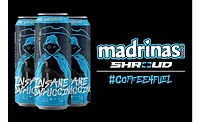Non-alcohol drinks influence consumer dining options
Foodservice operators creating unique beverage solutions
When it comes to my grocery retail shopping habits, the store’s beverage selection plays a major part in where I opt to spend my dollars. Based on data from Technomic, a Winsight company, it seems as though beverage options increasingly are impacting consumers’ restaurant selections.
The market research firm reported in its 2018 Beverage Consumer Trend Report that more consumers today than two years ago indicate that non-alcohol beverages are “very important” when deciding where to dine. According to the report, 23 percent of respondents indicated this compared with 18 percent in 2016.
“Beverages are increasingly important to creating memorable foodservice experiences,” said Anne Mills, senior manager of consumer insights at Technomic, in a statement. “Brands are leveraging beverages to differentiate through signature drinks like mocktails, over-the-top options like extreme milkshakes and better-for-you options. But, demand for innovation continues to rise and it will be critical to take beverages to the next level while still meeting demand for familiar favorites.”
Based on responses from more than 1,450 consumers, as well as menu and industry data from the Ignite database, Technomic’s report also found that 39 percent of consumers overall purchase four or more beverages a week from foodservice establishments. Respondents also indicated they are most willing to pay extra for 100 percent fruit juice.
Beverage-makers and restaurants owners are heeding this call through their latest innovations. For example, Cooper Tea Co. launched B.W. Cooper’s Organic Cold Brew Tea 11:1 Concentrate, a cold-brew tea concentrate designed for restaurants, coffee shops and other commercial foodservice applications, it says.
“Once the cold-brew phenomenon moved beyond coffee and into tea, we started getting requests,” said Colleen Norwine, Cooper Tea executive director of sales and marketing, in a statement. “Everyone loved the taste of cold-brewed tea and wanted to capitalize on the higher price point it commands; but there wasn’t a practical way for high-volume restaurants to serve it. We’re excited to be the first to provide a solution.”
Packaged in shelf-stable, 32-ounce miniature milk jugs, each “mini-jug” of concentrate makes 3 gallons of cold-brew tea when mixed with water. Batches of tea can be made based on demand, which reduces the amount of stale tea thrown out, conserves water, and improves environmental sustainability in local communities, the company says.
Foodservice operators also are turning to seasonal favorites when developing non-alcohol beverage options. For example, Smoothie King introduced limited-time smoothies featuring real, organic pumpkin. Available through Dec. 26, the four flavors are as follows: Slim-N-Trim Pumpkin, a 240-calorie smoothie with 2.5 grams of fat and 15 grams of protein; Coffee High Protein Pumpkin, a post-workout smoothie featuring 31 grams of protein; Vegan Pumpkin, a better-for-you vegan treat; and Pumpkin D-Lite, a smoothie made with frozen yogurt with no added sugar.
As non-alcohol beverage selections become more important to consumers, it will be exciting to see which new products will engage foodservice operators and consumers.
Looking for a reprint of this article?
From high-res PDFs to custom plaques, order your copy today!





